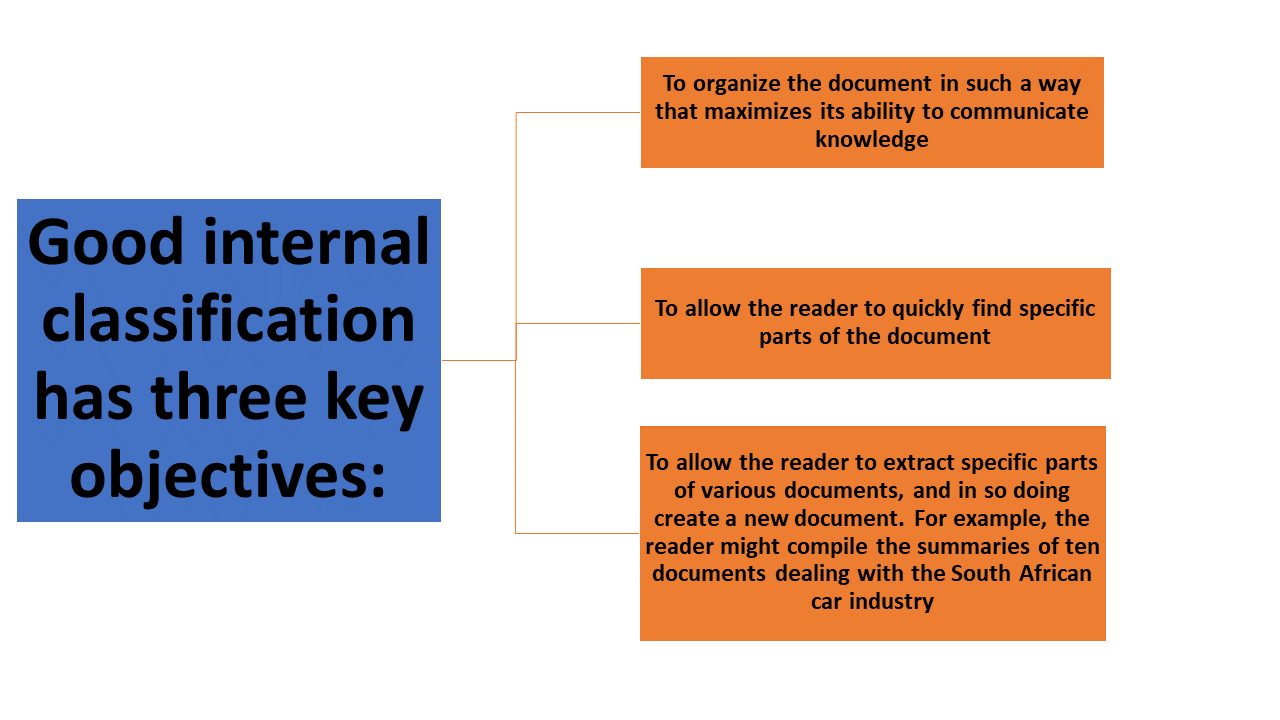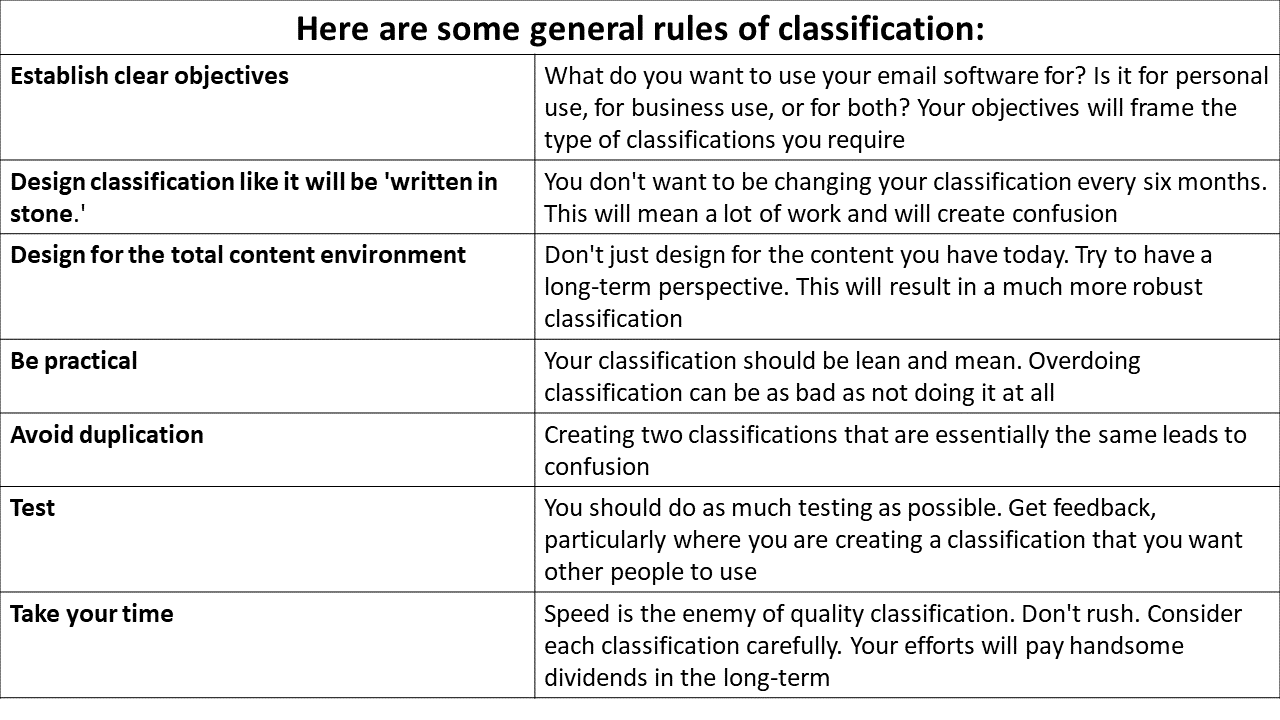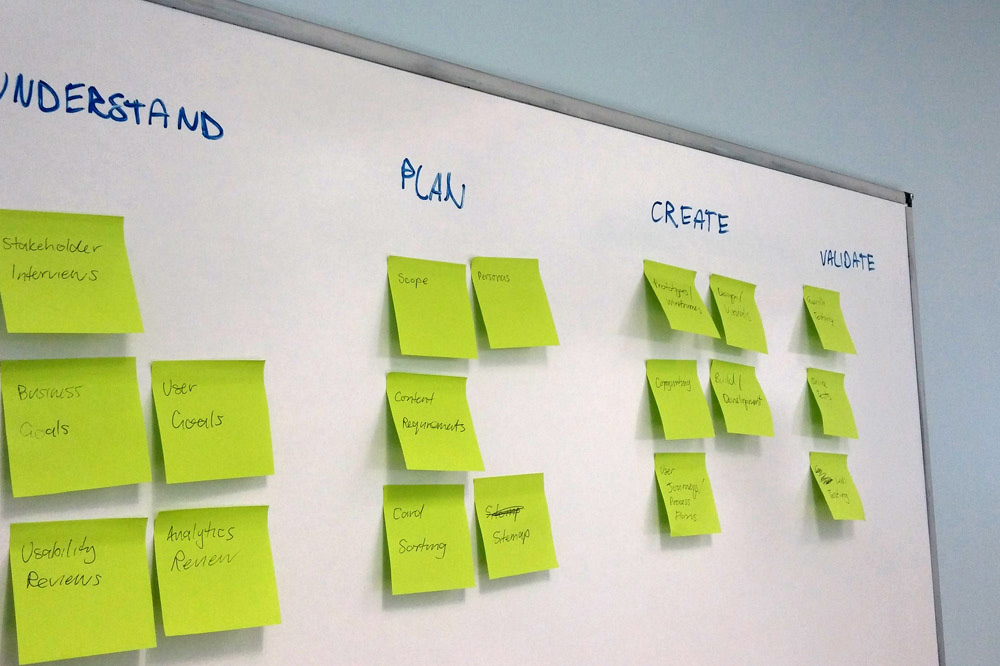Classifying and Categorising
Questions that help you classify or categorize information:
- How are these ideas alike? How are the ideas different?
- Which ideas belong together?
- How are the ideas related?
- How would you group the facts from the selection?
Classification is an inherent part of creating a document. Every time you write a heading, you are in fact creating a classification. If the document is long (more than 600 words) you should have sub-headings. These are sub-classifications underneath the heading classification.

Classification experts tend to focus on organizing complete documents, books, music and other content. They classify for two reasons:
- To organize the content so that it can be found quickly.
- To place the content in context so that it becomes part of a cohesive body of knowledge.

Sorting
One important kind of sorting is arranging items of information in alphabetical sequence according to some pre-defined ordering relation (sort key by each group of lists), e.g. when one sorts the books in a library by title, subject or author (all alphabetically sorted normally in ascending order).
The resulting order may be either ascending or descending, because essentially all sorting is numerical sorting. Now if you sort on different keys, then you get different lists of header information (such as the author's name) with the appended tailing records (such as title or publisher).

The main purpose of sorting information is to optimise its usefulness for specific tasks. In general, there are two ways of grouping information:
- By category e.g. a shopping catalogue where items are compiled together under headings such as 'home', 'sport & leisure', 'women's clothes' etc. and
- By the intensity of some property, such as price, e.g. from the cheapest to most expensive.
This is illustrated by the following story:
Managers are on a course of basic computer terms and they are explained the meaning of sorting. The lecturer comes in and throws hundreds of various nails and screws, new, old, rusty and crooked, of different size and material on the table. S/he then tells them to, sort! The student in no time create a dozen or so heaps each with relatively homogenous members, and with some undecided cases left. The lecturer picks up a straight and strong nail, and hammers it in the wall with his/her shoe sole. "You failed to ask sort what for, or what to sort on" – s/he would tell the puzzled audience.
In the book Information Anxiety by Richard Saul Wurman, he proposes that the most common sorting purposes are Name, by Location and by Time (these are actually special cases of category and hierarchy). Together these give the acronym LATCH (Location, Alphabetical, Time, Category, Hierarchy) and can be used to describe just about every type of ordered information.